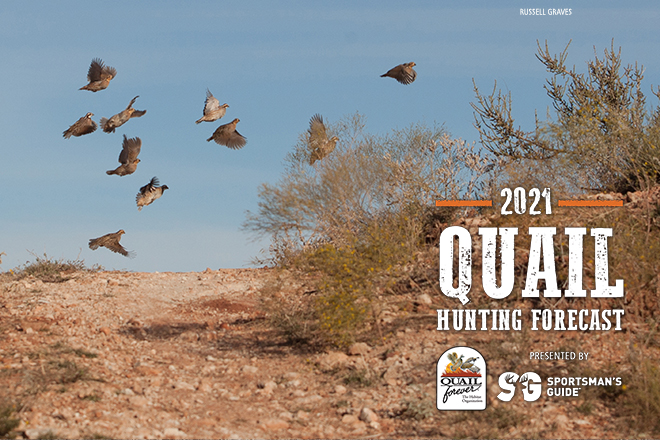 By Oliver Hartner
By Oliver Hartner
Winter storm conditions from earlier this year might present a problem for some areas, but average rainfall and increases in habitat management across the state mean most established coveys in Virginia faired well going into fall.
WEATHER AND CONDITIONS
“Our winter was not too harsh until later. We had a severe ice storm in parts of the state in mid February, and we had snow and cold from late January until late February. I don't think any of it was on the ground long enough to impact feeding or survival,” says Marc Puckett, wildlife biologist and small game project leader for the Virginia Department of Wildlife Resources.
Temperate early spring conditions with average rainfall seem to have helped these areas. Puckett adds, “A lot of downed loblolly pines and limbs resulted from the accumulation of ice during this past winter and the destruction of those should have allowed more sunlight to reach the forest floor. So, I suspect cover is better in these areas than it has been in years past since those grasses had a chance to grow this spring.” Mostly average rainfall during both the spring and summer provided stable nesting conditions with only a few dry spells in between.
HABITAT, BROODS AND COUNTS
Years of work from private and public conservation efforts seem to be paying off for bobwhite in the Old Dominion. Puckett and other wildlife biologists continue to see encouraging results from their efforts over the last decade to increase conservation program recruitment and habitat restoration. “Overall, I think habitat is increasing. Landowner interest in our cost-share programs such as the Working Lands for Wildlife Program (WLFW) has increased, and along with it, so has the available acres of habitat on private working farms and timber stands. In some counties with high concentrations of WLFW habitat projects, we have seen a much higher rate of anecdotal quail reports,” he observes.
Ancillary reports from landowners and hunters suggest a good hatch and summer survival rate for quail chicks. Puckett says, “I think the spring breeding population was OK, and weather conditions have been buy-in-large good to excellent. With the anecdotal reports of brood sightings, some in places where quail had not been seen in years, I am optimistic that we will have a good fall population. I also noticed that male whistling ended earlier this year, which could indicate a very good early and mid season hatch.”
Survey data analyzed from recent years suggests a stable trend for Virginia’s quail population for the 2021-22 season. “The last fully analyzed data from our hunter survey showed that their seems to be a slightly increasing trend in coveys found per hour of hunting above the 10-year average, and last year's Rural Mail Carrier Survey showed a 9 percent increase for quail over the previous year. However, our June quail count showed a decline,” Puckett says.
TOP SPOTS
Puckett believes the eastern third of the state in the coastal plain offers the best opportunity for successful quail hunting. “These areas have pine plantations that are being managed with thinning and fire where they adjoin agricultural lands, and many are reporting good quail numbers. The more rural the landscape the better,” he says. Puckett also adds that the south piedmont has shown some slight signs of habitat recovery. To find upland hunting WMA properties in Virginia, visit:
https://dwr.virginia.gov/hunting/where-to-hunt-in-virginia/.
INSIDER TIP
Puckett suggests, “Don’t focus on any single species. We have enjoyed some good woodcock numbers in many parts of the state, and by combining hunts that include woodcock and quail (or woodcock and grouse out in western parts of the state) when the seasons overlap, you can put your bird dog onto more points. After all, your dog does not likely care what they are finding as long as they are out in the field running and hunting.”